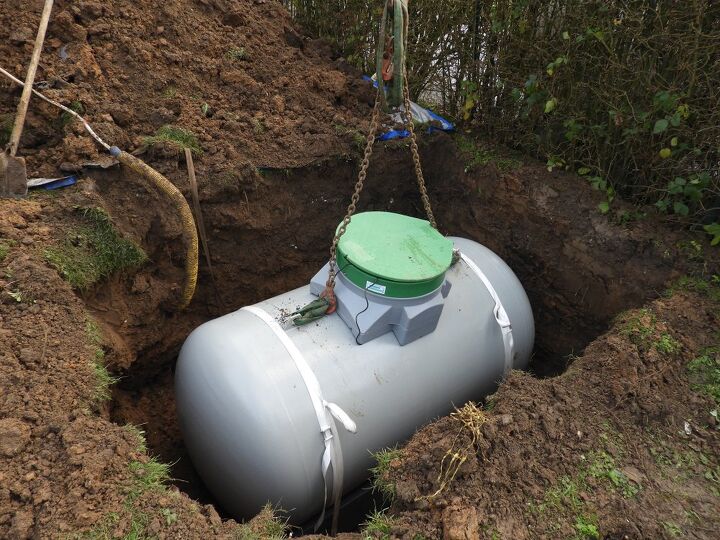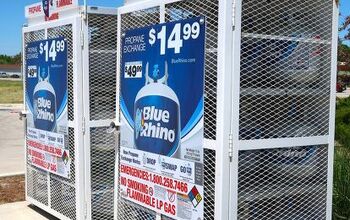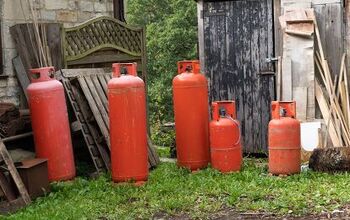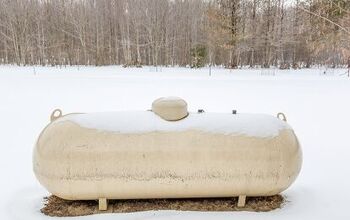Can You Bury A Propane Tank? (Find Out Now!)

Maybe you currently have an aboveground propane tank and wonder whether it’d be possible to put it underground. Perhaps you want to switch to a propane heating system, but don’t want an eyesore in your backyard. If you’re considering alternatives to the aboveground option, you’ve probably questioned whether you can bury a propane tank.
Yes, you can bury a propane tank; you can even do parts of the underground propane tank installation process yourself. Benefits of burying a propane tank include increased safety, better temperature management, and a nicer-looking backyard. Drawbacks of burying a propane tank include the high cost, the excavation of your yard, and the risk of floating.
Read on to learn more about burying a propane tank. We’ll also cover all of the pros and cons of underground propane tanks to better inform you of the process.
Do You Need Water or Fuel Tank Installation or Replacement?
Get free, zero-commitment quotes from pro contractors near you.

Is It Possible To Bury A Propane Tank?
Yes, you can bury a propane tank. Underground propane tanks are actually quite common and have been used for decades. Burying a propane tank (and using propane tanks in general) has a proven safety record.
Can You Install An Underground Propane Tank Yourself?
Some parts of the process could be a DIY project. For example, you could do the excavation yourself. You could also purchase fill, backfill, and do the landscaping after the propane tank is installed.
However, you’ll need a professional for much of the process. This includes the propane tank installation as well as cathodic protection and gas piping. The safety check and placing the system into service should be done by a professional as well.
Most underground tanks range from a size of 120 gallons to 1000 gallons. The most common underground propane tank size is 500 gallons.
What Are The Regulations For Underground Propane Tanks?
If you want to install an underground propane tank, there are some rules and regulations to keep in mind. First, underground propane tanks have to be installed at least 10 feet away from any property line or building. They also can’t be within 10 feet of potential ignition sources, such as air-conditioning units.
Another rule to remember is that underground propane tanks can’t be any farther than 100 feet from a driveway or access road. The reason for this is so the propane delivery truck’s hose will be able to reach the tank.
How Do You Bury A Propane Tank?
For a 500-gallon tank, you’ll need to dig a hole measuring five feet deep, five feet wide, and 12 feet long. It needs to be bedded in sand for proper drainage and then backfilled. Another option is to clean fill the propane tank so rocks and debris won’t damage the tank coating.
Be sure to keep the upper few inches of the tank’s dome exposed. This allows service access to regulators and valves. In addition, the ground should slope away from the dome to keep water from building up on top of it.
A professional will need to take care of the cathodic protection for the propane tank. This refers to a technique that prevents the metal on the tank from corroding. Sacrificial anodes, pieces of metal with more “active” voltages, are attached to the tank.
These pieces of metal waste away over time, preventing the steel of the propane tank from corroding. They can protect your propane tank for as long as 50 years before needing to be replaced.
What Are The Benefits Of An Underground Propane Tank?
There are many benefits to installing an underground propane tank. It looks nicer than an aboveground tank and, in turn, keeps your yard looking better. You can also take the excavation as an opportunity to improve your lawn and landscaping. An underground propane tank can even raise your property value.
When comparing refill and maintenance costs for underground and aboveground propane tanks, they are equal. You don’t have to pay any extra for underground tanks when it comes to refills and maintenance.
Underground propane tanks are better at handling extreme temperatures. This is thanks to the insulation of the soil around the tank.
Another benefit is that underground propane tanks are safer. If a leak were to occur, it would be confined to the soil. Propane isn’t harmful to the environment, so there’s much less risk involved with an underground tank.
What Are The Drawbacks Of An Underground Propane Tank?
One of the biggest drawbacks of installing an underground propane tank is that you have to dig up your yard. The extensive process of installation costs nearly double what it does for an aboveground propane tank. This is definitely something to consider if you want to stick to a tighter budget.
Another thing to worry about with an underground propane tank is floating. Floating is when the tank shifts under the ground. This is especially common for tanks in flood-prone areas, especially if the tank isn’t settled on a sturdy foundation.
Do You Need Water or Fuel Tank Installation or Replacement?
Get free, zero-commitment quotes from pro contractors near you.

Related Questions
Is a propane tank safe in a hot car?
A filled propane tank should never be left in a hot car. If you must transport a filled propane tank, keep it in a vertical position rather than on its side. Always place it in an area of the vehicle that has good ventilation. Even an empty propane tank should not be left in a hot car.
Is a propane tank supposed to hiss?
A hissing propane tank can be the result of a working relief valve. The relief valve opens (and may hiss) to decrease the pressure inside the tank. This is normal and nothing to worry about.
However, a hissing sound can also be a leak. If the smell of gas accompanies the hissing, evacuate the area immediately. Contact your propane supplier as soon as possible. If you can’t get in contact with them, call 911.
Is a propane tank dangerous?
Propane tanks are a safe source of energy as long as you follow certain safety guidelines. Don’t let your propane tank run out of gas, and don’t use or store it in a basement or living space.

With a lifelong passion for writing plus strong enthusiasm for home improvement and DIY projects, joining the team at Upgraded Home was an easy choice. Jessica Allen likes to share helpful information with current and aspiring homeowners. Aside from writing, Jessica loves doing yoga, playing the piano, and dabbling in graphic design.
More by Jessica Allen



























